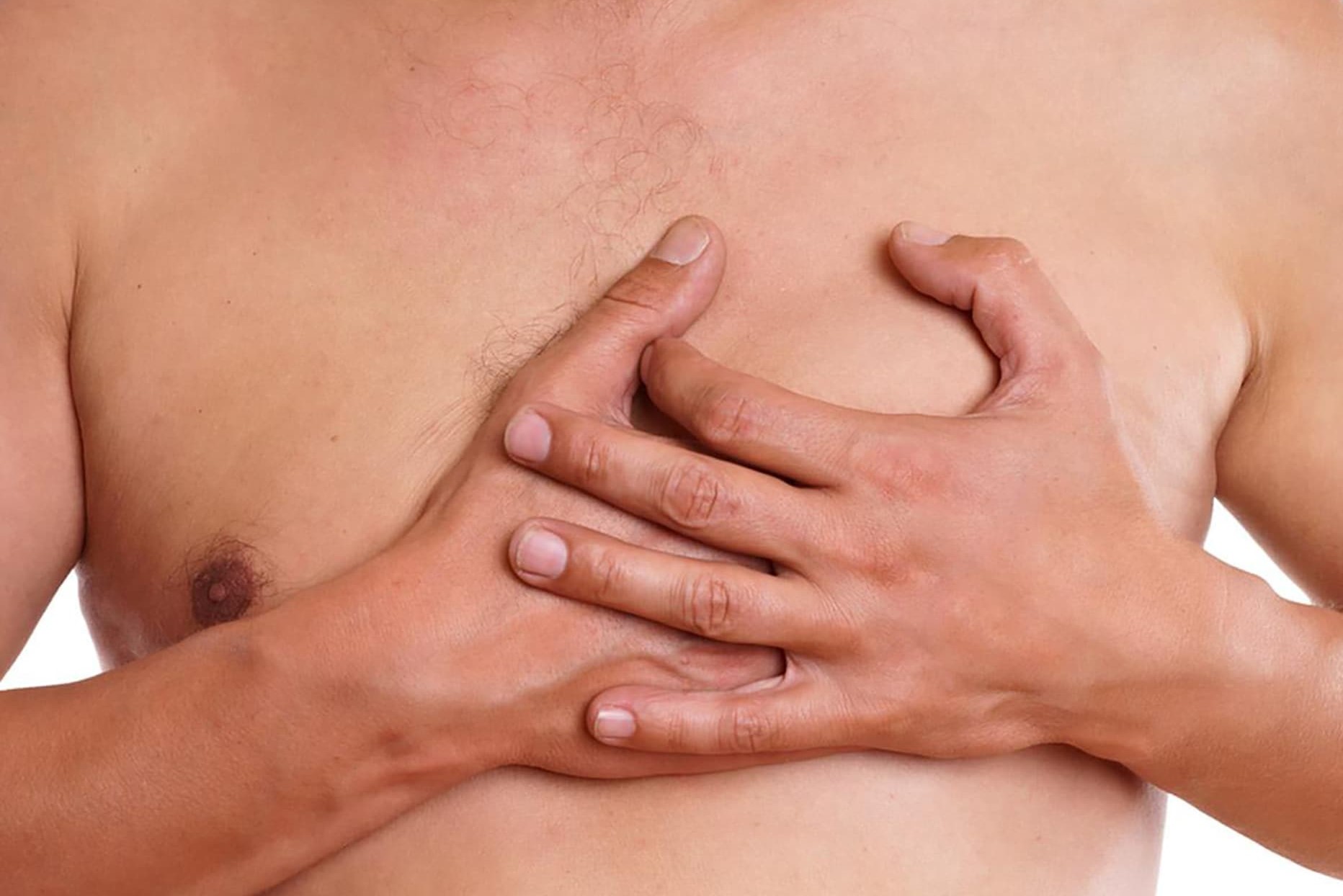
Male breast cancer: symptoms and diagnosis
Breast cancer is the most commonly diagnosed cancer in women and can also affect men. Although unusual, it is not uncommon, being diagnosed in about one in 100,000 men
This tumour mainly occurs in adulthood, after the age of 60.
Although the incidence is lower, breast cancer can also be diagnosed under the age of 45.
In a recent study published in Scientific Reports, it was found that the most commonly diagnosed cancer (in more than eight out of ten cases) is ductal cancer.
The study analysed data from 446 male breast cancer patients.
In this type of tumour, the disease mostly originates in the cells of the galactophore ducts, which in men are developed in a rudimentary form and which in women are responsible for carrying milk from the lobules to the nipple.
What are the risk factors for male breast cancer?
There are several factors that predispose to the onset of this type of tumour; In particular, conditions of altered hormonal metabolism play a role, with an imbalance in the ratio between oestrogen and progesterone that may occur as a result of testicular pathologies, liver cirrhosis, obesity, overexposure to substances containing oestrogen or with oestrogenic activity, gynaecomastia secondary to drugs (such as those for prostatic pathologies) or previous radiotherapy treatment in the breast area, as in the case of lymphomas.
Then there is the case of patients with Klinefelter syndrome, in which the presence of a supernumerary X chromosome leads to excessive production of oestrogen, resulting in significant development of the mammary gland, which becomes more susceptible to the onset of breast cancer.
The risk also increases in relation to family history: male cancer is often linked to genetic alterations in BRCA1 and BRCA2, which increase the risk of breast and ovarian cancer.
For this reason, men who suffer from this disease should be tested to detect any changes in their genetic make-up, so that information is also available to their families and appropriate prevention programmes can be carried out.
What are the symptoms of male breast cancer?
In men, as in women, lumps, swellings, bleeding and ulceration may be seen.
In contrast to women, however, signs such as orange peel skin rarely occur in men.
The smaller volume of male breast tissue, however, makes it easier to observe the presence of a lump.
Initially, breast cancer is often silent, so in many cases patients arrive at the first clinical examination with pathological lymph nodes, to which the tumour will already have spread.
The diagnostic pathway is the same as for female breast cancer, with examinations such as mammography, ultrasound and biopsy.
Determining the most appropriate treatment for male breast cancer
Infiltrating ductal carcinoma is the most common. The tumour originates in the ducts and then crosses the duct barrier to develop in the connective tissue of the breast. In this case it may also invade the lymph nodes.
Because there is less tissue, the tumour tends to grow very close to the nipple.
This part of the breast may be affected by Paget’s disease, with the tumour spreading to the areola and visible changes in the skin around the nipple (redness, burning, bleeding).
This form of cancer is more common in men than in women.
The prognosis tends to be favourable: in the past it was thought to be worse than that associated with female breast cancer, but today it is comparable to the latter.
The most appropriate treatment will be determined in the light of the results of the diagnostic tests, particularly the biopsy: male breast tumours are predominantly endocrine-responsive (80-90%), i.e. made up of cells with receptors for the hormones oestrogen and progesterone.
Therefore, hormone therapy is a viable option along with chemotherapy and mastectomy surgery.
Read Also:
Colour Changes In The Urine: When To Consult A Doctor
Acute Hepatitis And Kidney Injury Due To Energy Drink Consuption: Case Report
Bladder Cancer: Symptoms And Risk Factors


